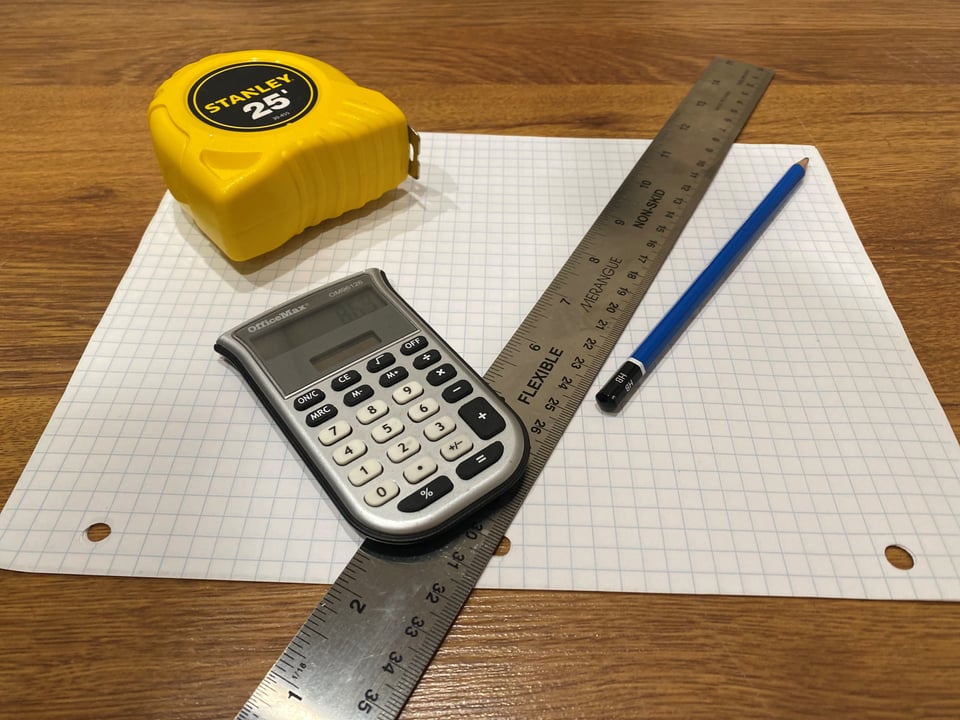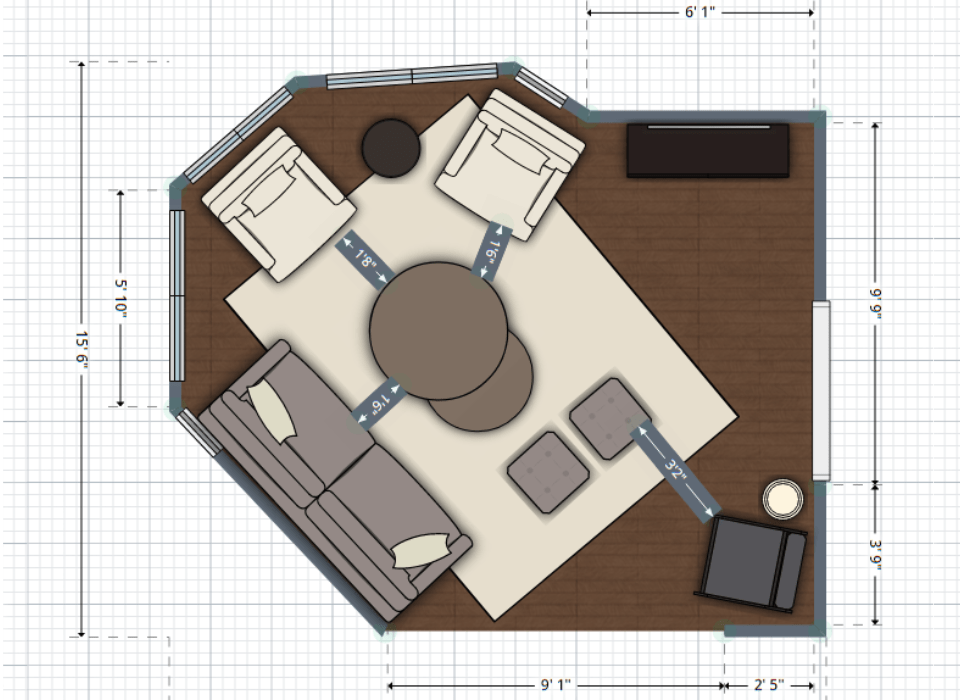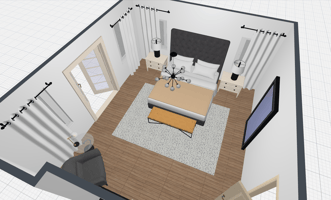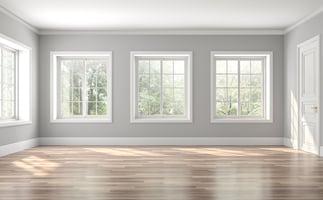Space planning is a fundamental step in creating a well-proportioned and functional space in your...
What Is Space Planning and Why Is It Important?
Space planning is a fundamental part of designing, decorating, and furnishing a functional space. It’s a term used in the interior design world a lot, and although it seems self-explanatory (I mean, you’re literally planning a space), there is a little more to it.Finding out exactly what space planning is and why it can help you could prevent you from making costly mistakes or, worse – ending up with a space that just doesn’t feel right.
Our Design Guides at McElheran’s Furniture + Design are in-house designers with over 60 years of combined expertise. Their industry knowledge and access to design programs help to create beautiful spaces for all our clients. And, a lot of times, it all starts with space planning.
In this article, one of our Design Guides, Shelley, will go through the ins and outs of space planning and why it’s important. We’ll also help you figure out what you need to get started, so you can achieve the look you want.
Space planning explained
Space planning is a mapped-out representation of the size and architectural components of a space. It allows you to visualize the furniture that can fit within it and prospective layouts. With this rendering, you can create a more functional area based on who uses the space and the room's intended purpose.
Gathering measurements and determining a room’s function and flow will give you a better understanding of how objects will fit in the space and work as an entire concept. A space plan can help you prioritize and organize the room’s design.
Space planning also allows you to play around and think outside the box when it comes to design. By looking at your rendering, you may see new opportunities to put furniture in places you never considered before!
Why is space planning important?
Having a plan and organizing yourself is important anytime you take on a new project. And, at the very least, it's helpful to have a general idea of what you're getting into!
And you’re investing in furniture, right? These are usually larger pieces that will likely be a part of your home for years to come. Not to get too dramatic, but furniture is one of those things that you really want to get right the first time. Space planning can help with that.
Ensures furniture will fit
One of the biggest advantages of space planning is a pretty simple one. It can determine whether your furniture will fit! And fit is more than just getting your sofa through the front door. You also want to make sure it’s of scale and proportionate to the room and the rest of the furniture. On top of that, you need space to allow for traffic to efficiently flow in and out of the room.
Helps you visualize the space
Not everyone has the spacial awareness or ability to visualize a finished product. Space planning gives you a “big picture” overview of your current space and what it can become as you move new pieces into it. It’s one of the most helpful ways to get a feel for a space before it’s actually furnished. And by looking at the space as a whole, you can create a more balanced and cohesive look.
Makes efficient use of a space
A small or awkwardly shaped room can sometimes look cramped and claustrophobic after it’s been furnished. With a space plan, you can thoroughly assess the space beforehand and make the most out of the space you do have instead of cramming in pieces to fit a space you don’t.
Exact measurements in your space plan come in handy with smaller spaces, too, because sometimes every inch matters!
A larger room can certainly benefit from a space plan, too. Big areas can be difficult to envision because of their size, and if you don’t plan well, you could end up with a lot of negative space or awkwardly spaced-out furniture.
Shelley points out that space planning may reveal an opportunity to add new zones to your larger room. If you have the space, you could create multiple zones, like a sitting area in one section of the room and a reading nook in another.
What supplies do I need to space plan?

You can either use planning software or make your space plan by hand. One is not necessarily better than the other, but you may find planning on a computer will allow you to experiment with different layouts more easily – once you get a feel for the program, of course.
Also, most planning software, like Planner 5D, RoomSketcher, and SmartDraw, is free, but only to a certain extent. Unlocking various features or using the programs at your leisure may cost you a bit.
Either way, here’s what you’ll need:
Space planning by hand
- Graph paper
- Straight edge
- Pencil
- Calculator
- Measuring device
Space planning on the computer
- Appropriate software (Planner 5D, RoomSketcher, SmartDraw)
- Calculator
- Measuring device
What should be included in a space plan?
In order to accurately depict what your space looks like so you can plan furniture and décor around it, you’ll want to take note of:
- The room’s dimensions
- Fixed features (fireplaces, alcoves, built-in shelving)
- Furniture you’re keeping
- Outlets
- Windows
- Doorways/openings
- Light switches
- Focal points (fireplaces, view, TV, feature wall)
Do I have to make a space plan?
No, you don’t! But it does help – even if it’s just a rough sketch.
And if you’re a little apprehensive because you don’t want to make a costly error, check out Space Planning: The 3 Most Common Mistakes to avoid some of the usual pitfalls.
But if you do want to make a space plan, just not on your own, that’s one of the many reasons to work with a Design Guide – complimentary space planning! Start with space planning and achieve the look you want by visiting with one of our Design Guides at McElheran’s Furniture + Design.


-min-1.png?width=800&height=400&name=DesignButton(png)-min-1.png)
-min.png?width=960&height=700&name=roomdesign(shelley1)-min.png)


